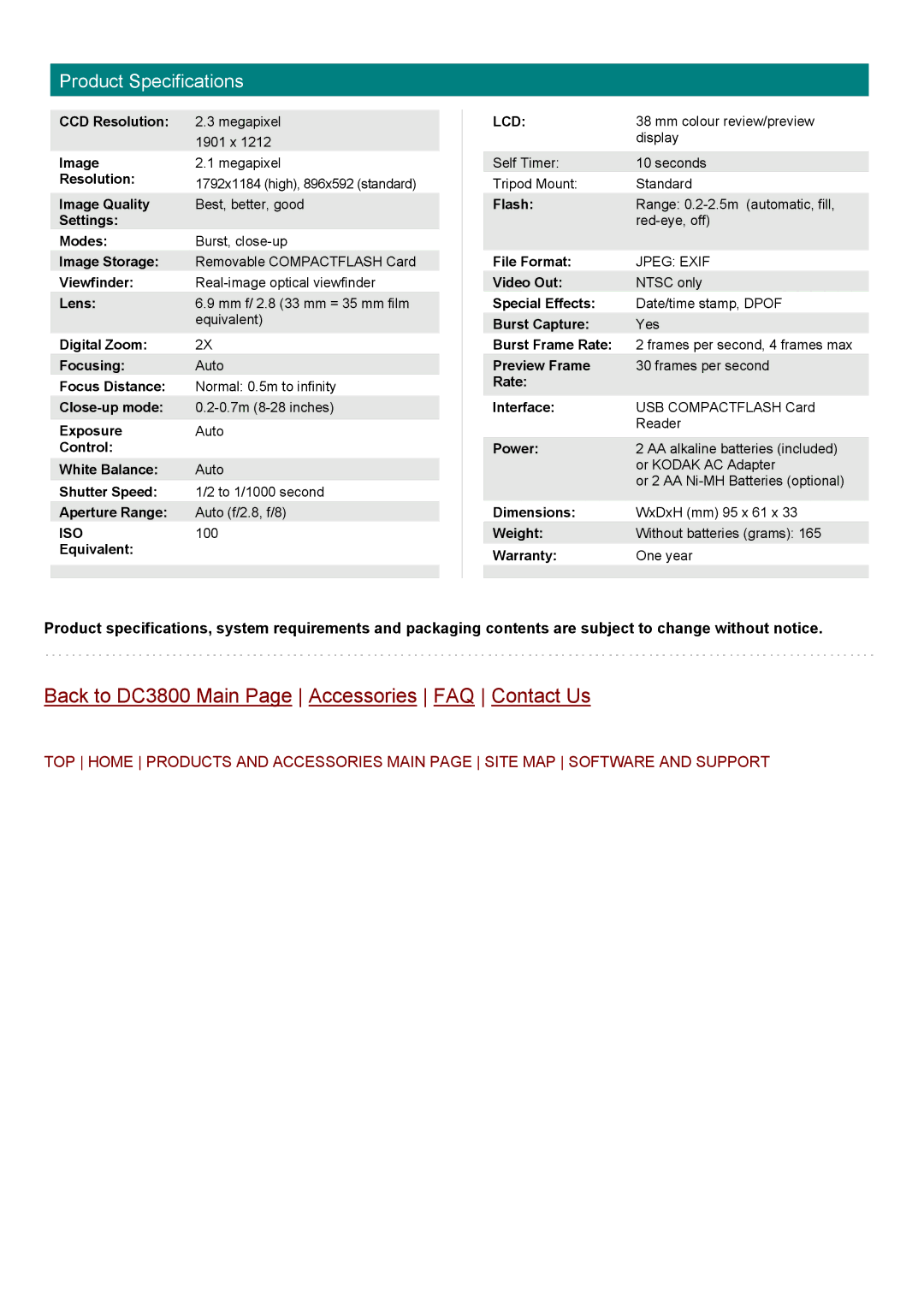DC3800 specifications
The Kodak DC3800, launched in the early 2000s, represented a significant step in the evolution of consumer digital photography, combining cutting-edge technology with user-friendly design. This model was part of Kodak’s aim to make digital photography accessible to the masses, and it came with a range of features that appealed to both casual users and photography enthusiasts.At the heart of the Kodak DC3800 is its 2.0-megapixel sensor, which allows for a maximum resolution of 1600 x 1200 pixels. This resolution was impressive for its time, enabling users to capture clear and detailed images suitable for printing and sharing. The camera also featured a 3x optical zoom lens, which provided versatility for different shooting scenarios, allowing photographers to get closer to their subjects without sacrificing image quality.
One of the standout characteristics of the DC3800 is its 1.8-inch color LCD screen, which made framing shots and reviewing images a breeze. This was a significant upgrade from earlier digital cameras that often had no screen or relied solely on an electronic viewfinder. The LCD also supported a simple interface, making navigation through various settings and features intuitive for users.
The Kodak DC3800 utilized CompactFlash memory cards for storage, a popular choice at the time that offered ample capacity for images. This allowed users to easily expand their storage needs and ensured quick data transfer when connecting the camera to a computer. The camera also had USB connectivity, enabling fast transfer speeds, which was a significant improvement over previous generation cameras that used slower transfer methods.
In terms of battery life, the Kodak DC3800 operated on four AA alkaline batteries, which provided decent longevity for users. However, for more extensive shooting sessions, the use of rechargeable NiMH batteries was recommended to save costs and reduce waste.
The camera had several shooting modes, including portrait, landscape, and night scene, allowing users to optimize their settings according to the environment. Additionally, its built-in flash helped tackle low-light conditions, further enhancing its usability in various settings.
The Kodak DC3800 encapsulated the spirit of early digital photography, combining practical features with the convenience of digital technology, making it an effective choice for many photographers at the turn of the millennium. Its design and functionalities paved the way for future advancements in the digital camera market.

